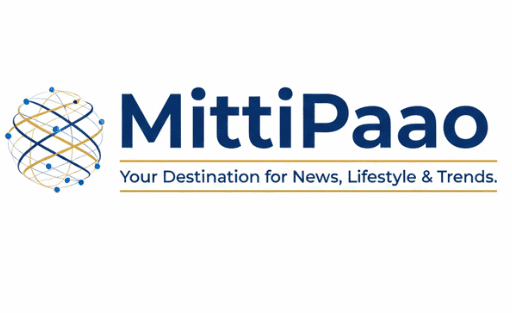5 AI Video Tools You Need in 2025 to Go Viral on Social Media

🚀 The Generative AI Gold Rush: Video, Voice, and Beyond
The digital landscape is changing at a breakneck pace. Indeed, 2025 has cemented generative AI as the undisputed king of content creation, transforming what was once a complex, expensive process into an accessible, five-minute task. The biggest headlines aren’t about mere text; they’re about 5 AI Video Tools AI video generators topping all trends. With revolutionary systems like OpenAI’s potential GPT-5 launch and the rapid adoption of precision tools like Whisper Transcription and DeepSeek-OCR, the entire creator economy is being redefined.
Crucially, the most significant advancement is in video. These new AI tools are not just stitching together stock footage; they are generating hyper-realistic, cinematic scenes from simple text prompts. Therefore, for creators and marketers, mastering these top tools is no longer optional—it’s essential for survival. This article dives deep into the top 5 AI video generators of 2025, offering practical tutorials and powerful monetization tips to help you create viral content overnight.
🥇 The Top 5 AI Video Generators Exploding in 2025
The field is competitive, but a few tools have pulled ahead based on realism, creative control, and sheer speed. Consequently, here are the five platforms dominating the generative video space:
1. Google Veo 3.1: The Cinematic Powerhouse
Google’s Veo model, especially with the recent 3.1 update, stands out for its unrivaled cinematic realism. It excels in producing footage that features natural camera dynamics, realistic object physics, and exceptional visual continuity—a notorious pain point for older AI models.
- Why It’s Exploding: Veo 3.1 is the new benchmark for professional-grade quality. Moreover, its unique ability to handle complex narrative flow and seamlessly integrate native audio and lip-syncing characters makes it a favorite for branded content and short films.
- Best For: Cinematic storytelling, complex narrative concepts, and branded advertising that requires high emotional nuance.
- Key Feature: Ingredients to Video, allowing you to input reference images or specific visual style guides for consistent output.
2. OpenAI Sora: The Visionary Director
While still with limited public access, OpenAI’s Sora remains the ultimate aspirational tool, showcasing what AI is truly capable of. It’s famed for its ability to generate high-definition clips up to a minute long that look entirely “directed” by a human.
- Why It’s Exploding: Sora’s strength lies in its understanding of the physical world and its capability for multi-scene narrative flow. In addition, it has a deep grasp of lighting, composition, and emotional subtext, creating content that feels inherently human.
- Best For: Groundbreaking visual experiments, artistic concept videos, and setting new quality standards.
- Key Feature: Exceptional coherence and long-range continuity, sustaining characters and environments across multiple complex shots.
3. Kling AI: The Budget-Friendly Speedster
Kling AI has rapidly gained popularity by offering an exceptional balance of price, performance, and speed. Therefore, it is perfect for creators who need a high volume of quality clips without the premium price tag.
- Why It’s Exploding: It’s a production-ready tool that delivers very stable, high-quality motion and composition control. Furthermore, the built-in sound generation is intuitive and fast, which significantly cuts down on post-production time.
- Best For: High-volume content creation, social media short-form clips, and quick visual tests for marketing.
- Key Feature: Fast, reliable generation with an emphasis on production stability and low artifacting.
4. Runway Gen-4: The Creator’s Workflow Hub
Runway has always been a pillar of the AI video ecosystem, and its Gen-4 model, powered by the new Aleph system, continues to impress with its robust editing capabilities and clean user interface. It focuses on the whole workflow, not just the generation.
- Why It’s Exploding: Runway provides a seamless transition from a generated clip to an editable asset. Consequently, it includes powerful features like 4K upscale, scene expansion, and the revolutionary Aleph model, which allows for post-generation edits like changing camera angles or weather with a text prompt.
- Best For: Professional video editors, integrated workflow with existing tools, and projects that require advanced post-production edits on generated footage.
- Key Feature: Aleph Model, which enables high-level, post-generation video editing and transformation using text prompts.
5. Synthesia: The Avatar King for Education and Business
Synthesia stands apart from the cinematic tools by focusing on one thing: realistic AI avatar video creation at scale. It is an indispensable tool for e-learning, corporate training, and multilingual communications.
- Why It’s Exploding: It eliminates the need for cameras, studios, and actors. Clearly, with over 140 languages and a library of 240+ digital avatars, businesses can create personalized, multilingual videos at an unprecedented scale.
- Best For: Corporate training, explainer videos, personalized sales outreach, and e-learning content.
- Key Feature: Bulk Personalization, which allows you to spin up hundreds of custom videos from a simple spreadsheet (CSV).
🛠️ Essential Tutorials: Going from Prompt to Production
Ultimately, great tools are useless without a strong strategy. Follow these steps to maximize your output and efficiency:
A. The “Prompt-First” Strategy (For Veo, Sora, Kling)
- Define the Shot: Don’t just describe the scene; write it like a director’s note. Example: “A dramatic, low-angle cinematic shot of a determined woman running through a misty, neon-lit cyberpunk market in Tokyo, 35mm film grain, anamorphic lens flare, high-contrast lighting.”
- Use Negative Prompts: Tell the AI what not to include (e.g.,
"no blurry faces, no choppy movement, avoid artifacts"). Nevertheless, this step is critical for maintaining quality control. - Reference and Iterate: For Veo, upload a reference image (“Ingredients to Video”) to lock in the aesthetic. Then, generate a 2-second clip and iterate on the prompt until the continuity and style are perfect before generating a longer clip. Similarly, this saves time and credits.
B. The “Faceless Brand” Workflow (For Synthesia, HeyGen)
- Script with AI: Use a large language model like GPT-4o (or the rumored GPT-5) to generate a concise, engaging script focused on a single hook. Afterward, feed the transcript into a tool like Whisper Transcription to verify length.
- Select/Customize Your Avatar: Choose an avatar that aligns with your brand’s demographic and tone in Synthesia. For example, a professional avatar for a financial explainer, or a more casual one for a tutorial.
- Bulk Production: For personalized outreach (e.g., welcome videos for new clients), use the Bulk Personalization feature. Specifically, map a column in your CSV (like
ClientName) to a variable in the script (Hello, $ClientName!), generating hundreds of unique videos in minutes.
🧠 The Responsible Creator: Why Human Oversight is Non-Negotiable
For any website pursuing monetization, Google places immense value on E-E-A-T (Experience, Expertise, Authoritativeness, and Trustworthiness). Consequently, the ethical application of AI is a primary differentiator between high-quality content and “AI slop.”
- Fact-Check and Refine: AI models, while powerful, are prone to “hallucinations”—generating convincing but factually incorrect information. Therefore, every script and visual element must be meticulously fact-checked, especially if you are teaching monetization strategies.
- Infuse Experience (E in E-E-A-T): AI provides the what, but a human provides the why and the how-to-do-it-better. In this manner, your personal commentary, unique insights, and voice are what build authority and reader trust, which are critical for AdSense approval.
- Mitigate Bias: AI models are trained on existing data, and this can introduce unconscious bias (e.g., in character representations or language). Clearly, human review is essential to ensure the content is fair, inclusive, and aligns with high ethical standards.
Ultimately, view AI as a powerful co-pilot, not an autopilot. Your final edit, your unique perspective, and your commitment to accuracy are what make this article truly valuable and deserving of monetization.
💸 Monetization Tips: Turning AI Content into Cash
Generating high-quality video quickly creates incredible opportunities for monetization. Consequently, focus on these high-leverage strategies:
1. YouTube Cross-Posting and the Short-Form Funnel
The goal isn’t just one viral video; it’s a high-engagement funnel.
- Strategy: Use AI tools like Kling or Runway to create short, captivating, 15-second clips (YouTube Shorts, TikToks, Instagram Reels). Then, use these as a funnel to a longer, more detailed video on your main YouTube channel (Monetized through AdSense). Therefore, the fast production cycle of AI allows you to post consistently, which is key to algorithm success.
- Pro Tip: Use the automatic captioning features in tools like Runway and Kapwing to achieve high-engagement visuals for shares. In this manner, you capture scrollers who watch without sound.
2. Niche Content Agency & White Label Services
Businesses urgently need video content but lack the resources. Specifically, you can fill this gap.
- Strategy: Target niche industries (e.g., real estate, local dentists, e-commerce stores) and offer “AI-Powered Video Packages.” Use Synthesia to create consistent training or explainer videos for them, or use Veo/Kling to generate professional product b-roll.
- Monetization: Charge a monthly retainer for content creation, providing a steady, recurring income stream.
3. Affiliate Marketing and Educational Courses
The demand for “How to use AI” tutorials is insatiable.
- Strategy: Create educational content (YouTube, course platforms) teaching people how to use the top 5 tools mentioned here. In fact, this is the perfect content for high-engagement visuals. Place affiliate links to the tools (Synthesia, Runway subscriptions) in your video descriptions and course materials.
- Monetization: Earn commission from the affiliate links and revenue from course sales. Furthermore, your expertise on current tools like Veo 3.1 and the forthcoming GPT-5 integrations makes your information highly valuable.
🔮 The Future: Multimodal AI and Seamless Integration
The launch of advanced models like GPT-4o—and the anticipation for what GPT-5 will bring—signals a future where video, voice, and text generation are handled by a single, multimodal platform. Meanwhile, with Google’s Gemini ecosystem tightly integrating Veo, audio transcription, and data analysis (like NotebookLM), the process is becoming seamless. As a result, the barrier between a creative idea and a publishable, viral asset has never been lower.
To conclude, 2025 is the year to jump in. The tools are mature, the workflows are fast, and the monetization opportunities are vast. Specifically, pick one of these five tools, master its unique strengths, and start creating viral content today.
Want to explore more trending AI tools and video creation insights? Visit our innovation hub AIVerse for the latest AI reviews and tutorials.
Visit our Travel Page for Expert Tips, Destinations & Inspiration for Your Next Vacation.



